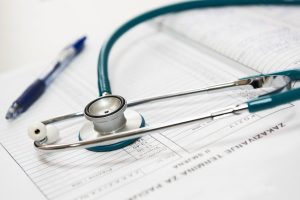What is the lipid profile used for?

The lipid panel or lipid profile is basically a complete cholesterol test. The doctor uses this to measure the number of triglycerides and the amount of ‘good’ and ‘bad’ cholesterol in the blood. Cholesterol is a type of fat, soft and waxy in nature which is needed by the body to function properly. Too much of cholesterol would lead to stroke and heart disease. Atherosclerosis, hardening or clogging of the arteries can also result.
The chances of higher cholesterol levels can be seen more in men than women. Men should be routinely checking the cholesterol levels as soon as they reach an age of 35. Women should begin the routine screening of cholesterol at the age of 45. It is a good idea to check the levels every 5 years starting from the age of 20. If you are already taking medication to control the cholesterol levels or suffering from heart disease, diabetes, stroke or high blood pressure, you should be checking the cholesterol every year.
What would be measured by the lipid profile?
The lipid profile is a complete cholesterol test that is used to measure four types of lipids (or fats) in the blood. These include the following:
- Low-density lipoprotein (or LDL) cholesterol – This type of cholesterol is also known as ‘bad’ cholesterol. Too much of this type of cholesterol in the blood would raise the risk of the heart diseases, atherosclerosis and stroke.
- High-density lipoprotein (or HDL) cholesterol – This type of cholesterol is known as ‘good’ cholesterol. This is also known as ‘good’ cholesterol as it helps to remove the LDL cholesterol from the blood.
- Triglycerides – The calories that are not needed by the body are converted into triglycerides. These are stored in the fat cells. People who eat too much sweet, are overweight, diabetic or drink too much of alcohol might have high triglyceride levels in the body.
- Total cholesterol – This is the total amount of cholesterol present in the blood.
It is important to have routine checkups to ensure that your body is functioning properly. Some tests like the VDRL test would help you to know if you have syphilis, which is a sexually transmitted infection.
How do you need to prepare for the lipid profile?
The doctor might ask you to fast before the cholesterol levels are tested in some cases. You would be allowed to eat if you are getting only the HDL and total cholesterol levels checked. But in case of a complete lipid profile, nothing other than water intake is allowed for about 9 to 12 hours before the test. The doctor should also be informed about any health problem or symptom that you have been experiencing. The family history of heart health should be shared with the doctor and all medication or supplement that you are currently taking should be stopped.
What is the procedure for the lipid profile?
The doctor would be taking a sample of the blood for checking the cholesterol levels. Even in the liver blood test which can measure the sgot levels, you would need to offer a blood sample. The blood is generally drawn in the morning. If fasting needs to be done, it can be done the night before.
The blood test would be an outpatient procedure. The test would generally be performed at a diagnostic lab. They can often be done during regular doctor visits, at home or even at a local pharmacy. There are almost no risks associated with the lipid profile. You might feel a little faint or soreness at the site where the blood is drawn.
The lipid profile can help you to keep the cholesterol levels under control.






